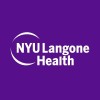
ED Adaptive Staffing Study
Emergency MedicineWell-Being1 moreEmergency Departments (EDs) across Ontario are being inundated with unprecedented high patient volumes and a staffing shortage that directly impacts patient care and flow. An area of concern among EDs is the offload zone where patients are brought in by ambulance. EMS offload time is the time it takes paramedics to transfer a patient to the appropriate area within an emergency department and give hospital staff a summary of what concerns the patient is seeking care for. There are multiple factors that may delay this time, including limited staff in the offload area to complete the transfer process due to competing patient care responsibilities. The adaptive staffing model study will look to add a primary care paramedic (PCP) or a registered nurse (RN) in the offload zone during times of high ambulance volume (August to January) to help with patient care within the offload zone. This single-centered community hospital study will evaluate the benefits of having a PCP or RN, compared to the current model, on ambulance offload times, patient safety outcomes, patient treatment times, and staff well-being using three different models of staffing.

Effect of Implementation of the Danish Emergency Surgery (DANAKIR) Support Network on Post-discharge...
Bowel PerforatedBowel ObstructionEffect of implementation of the Danish Emergency Surgery (DANAKIR) support Network on post-discharge outcomes after major emergency abdominal surgery: a prospective before and-after study Background Major emergency abdominal surgery is performed in more than 5000 patients yearly in Denmark. In general, little is known about the period after the discharge of these patients besides that chronic pain, physical dysfunction, and quality of life are severely affected in up to 50% of patients at long-term follow-up. A recent study investigating unplanned readmission after major emergency abdominal surgery found that up to 50% undergo unplanned readmission within the first 180 days after discharge. Purpose The purpose of this study is to evaluate the effects of inviting patients undergoing major emergency surgery and their relatives to join a support network after discharge (the DANAKIR network). Methods This study is designed as a before- and after study. Prior to establishing the DANAKIR (Danish Emergency Surgery Network) support network, the investigators will consecutively during a one year inclusion period prospectively include all patients undergoing emergency abdominal surgery with a midline laparotomy. The inclusion period starts 1st August 2021. The investigators will register the following in the pre-implementation phase: Postoperative day (POD) 30: Quality of life (EQ-5D-5L) (by telephone) POD90: Quality of life (EQ-5D-5L) (by telephone), readmissions (by hospital file) POD 180: Quality of life (EQ-5D-5L) (by telephone), readmissions (by hospital file) Number of days at home with 90 days (by hospital file) Number of participants with at least one readmission (by hospital file) Hereafter the investigators will establish the DANAKIR support network. The investigators plan for a six-month inclusion period with DANAKIR starting 1th of September 2022 Intervention The DANAKIR intervention will consist of: Structured written discharge information for the participanats and relatives about expectations and precautions Invitation to the DANAKIR monthly information meeting All patients undergoing emergency abdominal surgery and members of their family are invited to participate in at least one DANAKIR meeting. Patients and their relatives can participate in as many meetings as they wish; however, we encourage all patients to participate at least once. DANAKIR meetings The monthly meetings are a core component of the support network. One time each month, a meeting will be held at Herlev Hospital with the participation of an emergency surgeon, an emergency surgery dedicated nurse, a dietician, and a physiotherapist. Furthermore, there will be research personnel present. Each professional (surgeon, nurse, dietician, physiotherapist) will host an informative 15 minute session regarding the postoperative course after major emergency surgery. Following the presentations time for questions in plenum and private with the different experts will be held. Furthermore, there will be an opportunity for networking at the DANAKIR meeting. Each meeting is planned to last 2 hours. At the end of each meeting the patients will be asked to evaluate the meeting and content. Outcome measures The primary outcome of this study is the number of days at home within 90 days of surgery. The secondary outcomes are quality of life at 30 days, 90 days, and 180 days after surgery and the number of patients with at least one emergency readmission 90 days and 180 days from surgery. Trial size The investigators expect to include 200 patients in the before group and 200 patients in the after group. Perspectives The DANAKIR support network examines if a structure with physical network meetings is effective in regard to quality of life and preventing readmissions after major emergency surgery. The investigators hypothesize that the days at home will increase within 90 days from surgery and that quality of life will increase for both participants and their relatives by implementing a simple and obvious solution. If the DANAKIR network proves efficient it is an easily implemented solution to increase quality of life and days at home after major emergency surgery.

Assessing Mixed Reality for Emergency Medical Care Delivery in a Simulated Environment
Emergency MedicineThis study assessed the feasibility and effectiveness of using Mixed Reality (MR) through the use of HoloLens2TM technology to enhance emergency clinical care delivery in a simulated environment. This was achieved by inviting 22 resident grade doctors to complete two scenarios. Each scenario was supported either by standard care methods or Mixed reality. The participants were randomised to at the start of the scenarios to determine which support they would receive first. The main outcome was to see if there was difference in error rates. This was assessed using the ICECAP multidimensional error capture tool. Secondary outcomes included teamwork, scenario completion, stress/cognitive load, and Mixed reality device user acceptability.

Machine Learning Platforms to Predict 30-day Mortality After Emergency Laparotomy
Mortality RateThis study seeks to utilise retrospective patient data to train machine learning algorithms to predict the short term mortality and morbidity after an emergency laparotomy. Data will be collected via the Electronic Health records system at the Queen Mary Hospital Hong Kong. Machine learning models will be compared and the best-performing one will be explored for further optimization and deployment. Upon completion, we hope that this platform will aid clinicians to identify high risk patients and aid clinical decisions and peri-operative planning, with the aim to reduce mortality and morbidity in this high risk procedure.

Surgeons' Mental Distress and Risks After Severe Complications Following Emergency Surgery
Mental HealthSurgeons experience higher levels of work stress, even under normal circumstances. Many can suffer from substantial levels of mental health issues, especially when faced with severe complications. However, due to a variety of reasons, many surgeons are reluctant to disclose mental health issues or seek psychological help. Patients in need of emergency surgery are usually characterized by critical conditions and high surgical risks. Emergency surgeons always do not have enough time to clearly explain the ins and outs of the disease to the family members of the patients, only tell the key issues and risks that need to be paid attention to during the operation. The tone of the explanation maybe direct and blunt, which also could cause the incomprehension and dissatisfaction of the patients and their families. Due to the lack of communication, although the patient is in critical condition, the family members always think that the disease should be cured after arriving at the hospital. Therefore, once severe complications occur after the operation, the family members often find it difficult to accept the reality. This is also one of the important reasons for medical disputes in emergency surgery. In addition to delaying patients' recovery courses, severe complications also place enormous pressure on chief surgeons who performed the operations. Such pressures may bring great risks of psychological distress. Surgeons are also the victims when they encounter severe complications following emergency surgery. Their mental distress should not be minimized. Until now, little has been known about the effects of surgical complications on surgeons. In the current study, based on a large-scale questionnaire survey in China, the investigators aimed to investigate incidences of surgeons' mental distress following severe complications after emergency surgery. The investigators also aimed to identify independent risk factors which could help develop strategies to improve the mental well-being of these surgeons after such incidences.

Improving Risk Stratification of Emergency Department Patients With Acute Heart Failure
Heart FailureThe primary goal is to build and test a previously developed and validated risk model and clinical decision support tool embedded within the electronic health record to improve risk stratification of emergency department (ED) patients with acute heart failure (AHF).

Intranasal Midazolam for Treatment of Anxiety in Children Undergoing Suturing in the Pediatric Emergency...
AnxietyLacerationsLaceration repair can cause significant anxiety in children. As open wounds account for 21-25% of injuries in children presenting to the emergency department, the management of anxiety is of great importance. Anxiety can often lead to poor patient cooperation and the use of potentially excessive physical restraint. High rates of procedural anxiety have also been correlated with increased rates of negative behaviours after discharge. The current standard of care for suture closure of lacerations throughout most of Canada is to provide local analgesia only. The literature has therefore focused on finding anxiolytic adjuncts to local analgesia. Midazolam is an ideal adjunct due to its fast onset and short duration of action with an excellent safety profile. The advantages of the IN route are less pain on administration when compared to the IV and IM routes, and increased acceptability compared to the rectal route in older children. Oral midazolam also has poor palatability. While the onset of INM at 5-10 minutes, and duration of 20-40 minutes make it an ideal candidate for anxiolysis in the ED its use has been limited by the common side effect of nasal irritation, burning and lacrimation when it is administered in its droplet form. The recent development of mucosal atomization devices (MAD) has resolved this issue by delivering 30-μ particles to the nasal mucosa. Previous studies investigating the use of INM for laceration repair in the pediatric ED have demonstrated that INM is safe but most used non-validated measurement tools to assess anxiety and facilitation. Only one of these studies used atomized INM, retrospectively examining safety as the primary outcome. The authors reported an excellent safety profile for INM using the mucosal atomization device MAD-300 (Wolfe Tory Medical Inc.). The use of atomized INM for anxiolysis during pediatric laceration repair has not been evaluated prospectively. Most studies have focused on preschool aged children (<6 years). While studies have demonstrated that the prevalence of procedural anxiety is higher in younger children, up to 51% of children age 7-12 years experience high levels of procedural distress. The effectiveness of INM in the pre-adolescent age group is, therefore, yet to be determined. It is hypothesized that INM will reduce anxiety in children age 2-12 years undergoing laceration repair and will facilitate the successful completion of suturing by the physician.

Extended-release Naltrexone and Care Management for Alcohol Dependent Frequent Emergency Department...
Alcohol DependenceAlcohol Use DisorderOur primary aim is to assess the feasibility of initiating treatment in the ED with extended-release naltrexone (XR-NTX) plus care management (CM) vs. standard care and continuing care in cooperation with clinic providers as well as how best to assess outcomes. Secondarily, the investigators will explore its effect on various health outcomes (healthcare utilization and engagement, expenditures, drinking and consequences, quality of life) as well as the association of patient-level characteristics (e.g. sex, race, baseline drinking, health and psychosocial factors, mu opioid receptor genotype) with effectiveness. Determining both how to implement XR-NTX+CM and rigorously test its effects in the ED (phase 1) is essential before planning a large-scale effectiveness trial (phase 2).

Optimizing Tobacco Dependence Treatment in the Emergency Department
Tobacco Use DisorderThe investigators propose an innovative full-factorial design in a cohort of 1056 adult smokers in an urban emergency department (ED), to test the efficacy of four key intervention components: motivational interviewing, medication, quitline referral, and texting. At the trial's completion, a mixed-methods approach will be used to identify the components that were efficacious within the proposed cost constraint, along with feasibility and acceptability to providers and subjects. The investigators will then assemble an intervention that maximizes efficacy, given a cost-effectiveness constraint and findings from a qualitative analysis.

Betamethasone to Control Postoperative Pain in Emergency Endodontic Care
PainThe objective of this randomized double-blind study was to evaluate the effect of betamethasone in the control of postoperative pain in patients undergoing endodontic treatment.
